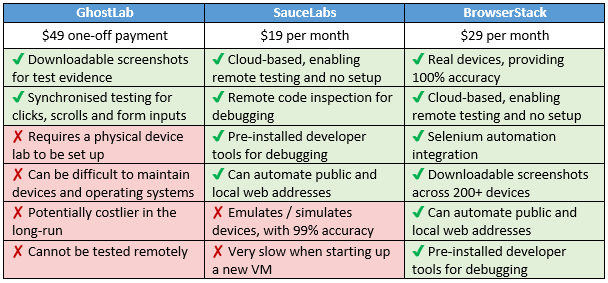These little mobile devices in our hands seem simple to use, compact, convenient, and extremely fast but testers need to apply a huge amount of effort, a multitude of skills. Sometimes professional tips of other big devices that might not be applicable when testing desktops or web applications whether you are currently testing a mobile app, or want to learn more about mobile testing and what it involves suggestions and ideas can help you get to start testing in the mobile space.
-
1Did you copied the text from this MoT dojo?– beatngu13Commented Dec 19, 2017 at 14:40
-
As @beatngu13 correctly noted, this is not a real honest question, but copy-pasted intro from a blog post. And question is so wide it is not answerable in any objective manner. For tips, use google.– Peter M. - stands for MonicaCommented Dec 19, 2017 at 14:50
-
You are right man @beatngu13 it copied actually one of my team member share this question I found it interesting & search on stack as it was not on "Software Quality Assurance & Testing," I ask it here. I suppose to Google search on rather than stack search. sorry for the trouble and thanks for sharing the link that is a very nice blog. thanks you once again– Nitin RastogiCommented Dec 20, 2017 at 8:47
2 Answers
The way we browse the internet is changing. In 2016, mobile devices and tablets were used to access the web more than traditional computers or laptops.
The difficulty is that the mobile and tablet landscape is highly fragmented, spanning many devices across manufacturers and models. In order to ensure greater acquisition, retention and click-through rates, websites need to be a completely accessible, responsive, and frictionless experience for the end user.
61% of users said that they are unlikely to return to a mobile site they had trouble accessing, with 40% leaving for a competitor’s site instead. In another report, 57% of users said they wouldn’t recommend a business with a poorly designed mobile site.
With this in mind, cross device and cross browser testing should be at the forefront of quality assurance. However, supporting and testing such a wide range of mobile devices can be a huge investment of time, effort, and money.
I spent some time investigating three possible solutions for testing web-based products in order to help mitigate the risk of lost custom and revenue, increase customer acquisition and retention, and to ensure the highest possible quality.
The table below contains a high level overview of three cross-browser / cross-device solutions, as well as the cost associated with each one. The prices are for a single user license (manual testing only) and, for SauceLabs and Browserstack, are charged annually.
It may be worth spending some time with these so you can draw your own conclusions. Some offer automation, some don't. Some offer a cloud-based service, some don't. It really depends on what you and your employer want to get out of device testing... but this should be enough to get you started.
Testing mobile devices almost always means testing GUI in a circumstances of lack of hardware resources. This is the first point one should consider when design a test approach to a particular mobile product.
The second one - platform specific of managing GUI of an application. For example Android destroys all objects on the screen of your app when you change the screen orientation from vertical to horizontal and back. Hence they are to be restored to make the process seamless for the user
Third one - almost all the GUI frameworks dispatch user input in a single thread, so one should make sure all the "heavy" or long-responsive (like fetching data from the network or calling other services of the device) operations are performed in parallel and do not make GUI freeze.
Fourth one - memory leakage. Since there is not that much memory available for your app, you should make sure your app is memory-effective.
Fifth one - power consumption. You need to make sure your app will not consume all the user's battery earlier than by the end of the day even in the most active mode your app supports.
Sixth one - security. Do not let the user to occasionally disclose personal data or the attacker to compromise that.
This is what is coming on my mind.
